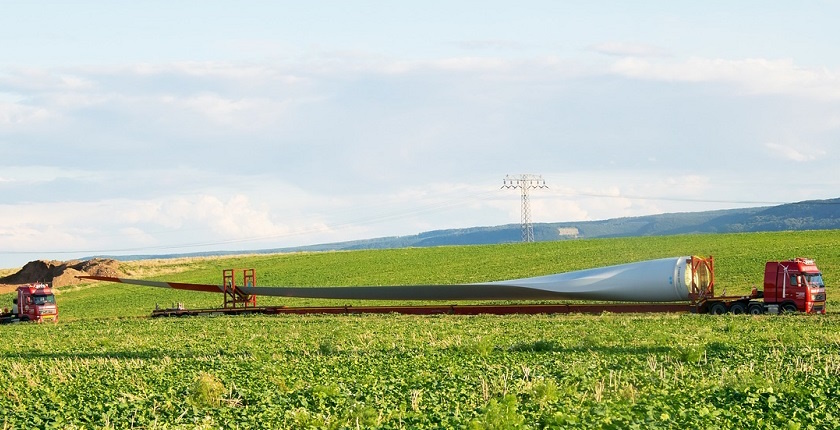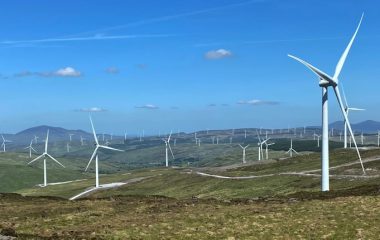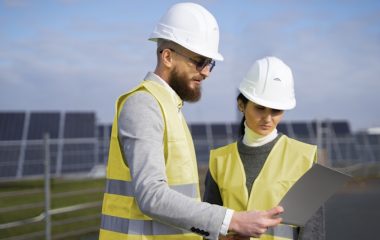
Photo: Hans Linde from Pixabay
After starting the procedure for selecting a strategic partner for the construction of solar power plants with a capacity of 1 GW, the Government of Serbia intends to do the same for wind farms with a total capacity of 1 GW. The decision is driven by the projection that the country will become a significant electricity importer as soon as 2026.
The intention to find a strategic partner for the construction of wind farms is part of the Plan for the Development of Energy Infrastructure and Energy Efficiency Measures for the period up to 2028, with projections up to 2030. The document was prepared by the Ministry of Mining and Energy, and adopted by the government.
The blueprint defines the basic directions of strategic development, which will be used to develop a new Energy Development Strategy of the Republic of Serbia. The plan is to adopt it by the end of the year.
The plan is the basis for further strategic assessments and projections of the energy mix until 2030 and 2050, in line with the country’s international obligations within the accession process to the European Union, and the decisions of the Energy Community.
Serbia can become a significant importer of electricity after 2026
The plan outlines a high risk of delays in the construction of new power plants, caused by external (Covid-19, events in Ukraine, beginning of the fourth phase of the EU’s Emissions Trading System – EU ETS) and internal factors.
It may boost Serbia’s electricity import demand in the years after 2026, while the expected increase in industrial production in the period until 2030 may lead to an even higher import dependence.
According to the plan’s authors, the situation points to the need for new production facilities.
The first activity will be to find a strategic partner for 1 GW of wind
When it comes to renewable energy projects, the ones run by state-owned coal and power producer Elektroprivreda Srbije – EPS are underdeveloped, and the company lacks the human capacity for their implementation, the document reads.
The ministry said it has analyzed the possibilities for EPS to get projects that are in a mature phase of development, for overcoming the lack of project teams within the company.
The first activity after the adoption of the plan would be to prepare and launch the procedure for selecting a strategic partner for the construction of wind farms with a total capacity of 1 GW, excluding management and maintenance. The start of their operation is expected by 2030.
Private projects with a capacity of 800 MW are in mature project phases
The document notes that the procedure for selecting a strategic partner for the construction of solar power plants of 1 GW in total is underway. The ministry expects them to be online by 2028 at the latest.
However, other possibilities for ensuring sufficient production capacity were also considered, so private projects in the mature project phase with a total capacity of 800 MW are also identified.
They can be implemented under the planned auctions, but also under a strategic partnership model envisaged by the Law on the Use of Renewable Energy Sources, the plan reads.
The authors identified four priority projects: 1 GW of solar, 1 GW of wind, the Klenovik solar power plant, with a capacity of 250 MW, and the Kostolac wind farm, with a capacity of 66 MW.
No new coal power plants
The plan does not envisage the construction of new coal power plants, but the existing ones are set to continue to operate after 2030, implying the need for new coal mines.
The main goal in electricity production is to ensure energy independence, meaning to lean predominantly on sources that are available in Serbia, the plan reads.
The idea is to install pump storage hydropower plants Bistrica, with a capacity of 628 MW, and Đerdap 3, with a capacity of 1,800 MW, and three hydropower plants within the Gornja Drina project in neighboring Bosnia and Herzegovina – Buk Bijela, Foča, and Paunci, with a total capacity of 212 MW.
Distribution losses are to be reduced to 8%
The key goal regarding the transmission network is to improve system flexibility by increasing the interconnection capacities by about 75%, the plan adds. Projects in the transmission system will also enable the integration of electricity from renewable sources, it said.
The main goal for the distribution grid is to reduce the losses by 2030 to 8% from the current 11% to 13%. In some parts of the country, they are higher than 25%.
In the energy efficiency sector, the planned measures are expected to yield savings of 3 TWh to 4 TWh annually, with the largest improvement in the heating sector.
The projected share of electric vehicles in the sale of new vehicles in 2030 is 15%, the document reads.









Be the first one to comment on this article.